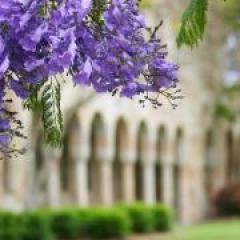Bioarchaeological approaches to migration and mobility: recent research in Queensland: Michael C Westaway
Abstract
Michael C Westaway and Shaun Adams.
For a number of reasons very few archaeological projects, which focus on Aboriginal Australia, have incorporated evidence from human skeletal remains. The issues around past mistreatment of Aboriginal people, and indeed their ancestors, has played a key role in determining the nature of the current research environment. It would now seem that many Aboriginal groups are more open to research in biological anthropology if it is undertaken in a manner sensitive to cultural concerns and, ideally, in partnership with Aboriginal people. I will discuss ARC funded research developed with Queensland Aboriginal communities and how this is providing important new insights into population history and movement, and indeed connections between neighbouring Aboriginal groups. These are difficult questions to tackle through standard archaeological approached and I will outline the advantages of undertaking a bioarchaeological approach. Importantly background scientific data acquired through a bioarchaeological approach also has enormous potential to aid in the repatriation of unprovenanced Aboriginal ancestral remains, and I will discuss how our research can also address this important social issue.
References
- Hobson, Keith and Stephen Collier 1984 Marine and terrestrial protein in Australian Aboriginal diets, Current Anthropology, 25(2):238-240.
About the Presenters
I am a bioarchaeologist with a background in Australian biogeochemistry and zooarchaeology. My interests lie in understanding human adaptivity to Australian environments and how environmental signatures are represented in the bioarchaeology.
Spending much of my youth in remote northern Australia I gravitated towards Aboriginal culture and cultural heritage management provided an opportunity to return with new skills to assist the community. I completed my undergraduate in archaeology at Flinders University, Adelaide and have worked as a heritage consultant since 2010.
Since then I have worked as an archaeologist throughout much of Australia and following Pleistocene investigations in NSW I was keen to broaden my knowledge of the ancient Australian landscape and environment. I subsequently moved into the field of vertebrate palaeontology and completed honours on a 30,000 year karst deposit on Kangaroo Island. These following years provided an opportunity to gain in-depth knowledge on Australian palaeo-environments and biology.
Following an anthropology internship in Western Australia I was keen to continue building capacities to view environmental and biological proxies in archaeology. I subsequently moved to Griffith University, Brisbane to undertake a PhD in archaeological biogeochemistry.
The past three years I have completed Australia’s first regional strontium isotope study, in Cape York, QLD. The project combines bioarchaeology, geochemistry and ethnography to map human mobility and subsistence on prehistoric and colonial period Aboriginal remains. The overarching aim of this project was to develop techniques to repatriate Australian unprovenanced remains held in museums around the world. My diverse fields of study and mentorship from some of Australia’s prominent archaeologist, palaeontologists and geochemists has led me to a greater understanding of ancient Australia, how biology is shaped by environment and how science can be utilised to empower first-nations peoples.
About Archaeology Working Papers
The Working Papers in Archaeology seminar series provides a forum for dissemination of archaeological research and ideas amongst UQ archaeology students and staff. All students are invited to attend the series and postgraduate students, from honours upwards, are invited to present their research. The aim is to provide opportunities for students, staff and those from outside UQ, to present and discuss their work in an informal environment. It is hoped that anyone interested in current archaeological directions, both within and outside the School and University, will be able to attend and contribute to the series.
2025 Upcoming Sessions
| Date | Presenter |
|---|---|
| 8th August | Nicholas Hadnutt and Lincoln Morse |
| 15th August | Jane McMahon |
| 22nd August | Martin Gibbs |
| 29th August | Karen Cooke |
| 5th September | Shoshanna Grounds |
| 12th September | Meg Walker |
| 19th September | Marc Cheeseman |
| 26th September | Ladislav Nejman |


